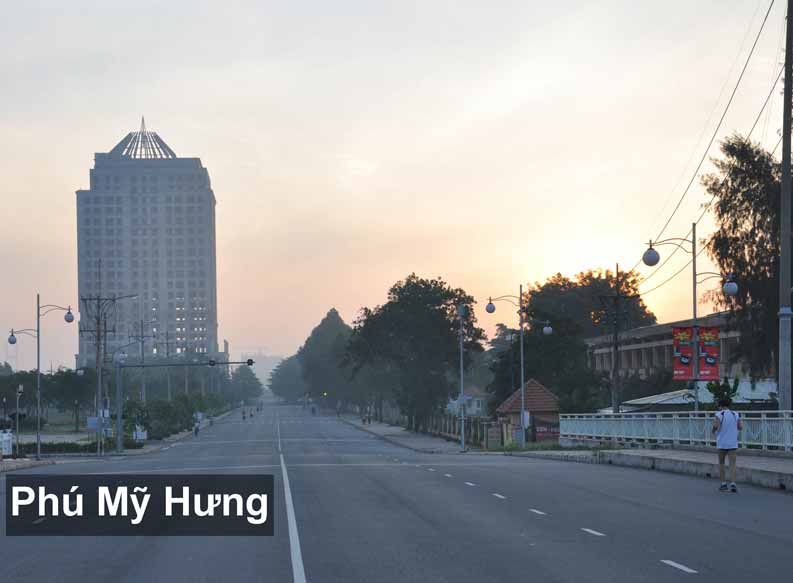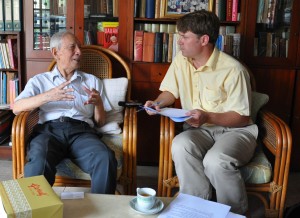
Phú Mỹ Hưng, also known as the Saigon South New Urban Zone, is located approximately 6 kilometers southwest of the historic center of Ho Chi Minh City. It is a master-planned mixed-use residential and commercial development filled with shopping and recreational centers, global business and conference facilities, and middle- to high-end residential housing. Developers designed Phú Mỹ Hưng with utopian visions of a modern and orderly city. The general ethos of the development is captured by Phú Mỹ Hưng’s official slogan: “Đô thị văn minh, cộng đồng nhân văn,” which the Phú Mỹ Hưng Corporation has translated into English as “Civilization City, Human Oriented Community.”
In our research, we asked some very simple questions:
“What is a “civilization city”?“
“What is it like to live in an urban zone explicitly designed to foster “urban civilization”?
“How does living in a place like this change the people who live there?”
Through the course of in-depth ethnographic research with residents of Phú Mỹ Hưng, we discovered that the idea of “urban civilization” was a powerful organizing framework for their understanding of the new world they wanted to create by living in the new spatial world of Phú Mỹ Hưng. But we also learned that the interaction between the master-planned space and the people who live in it is not one-way. This New Urban Zone has not only transformed Vietnamese life, but Vietnamese modes of living in and experiencing urban life have transformed the original vision of the development.
The residence area is filled with condominiums, townhouses and shopping centers that transform everyday life for residents. There is no more space for “alleyway culture” in the new city. Families rarely interact spontaneously with their neighbors, even if they live next door to one another. Street cafes and sidewalk vendors no longer exist in the way they do in other parts of Ho Chi Minh City and elsewhere throughout Vietnam. But this does not mean that social life has disappeared; it simply takes new forms. In the New Urban Zone, friends do not meet for coffee at impromptu sidewalk cafes. Instead, they meet early in the morning to exercise, to play tennis, badminton, and to walk together around the open streets and through the exercise pathways in the area’s parks. At other times of the day, they meet at cafes and restaurants. While spontaneous visits to “drop by” people’s homes are increasingly rare, friends still invite invite each other to their houses.
It is a common perception that Phú Mỹ Hưng introduced an urban space that is controlled exclusively by elites–that it is an area reserved exclusively for “rich people.” This is partly true: access to the most expensive housing in the new urban zone is limited to those who can afford the high price of living, including Western and Asian expatriate business managers, well-situated overseas Vietnamese (Viet Kieu), and successful Vietnamese businesspeople. But there are also many middle-income Vietnamese who choose to rent or purchase smaller flats in some of the older and less-expensive apartment complexes. Even the cheapest housing in Phú Mỹ Hưng (several hundred dollars per-month for a two bedroom apartment in the oldest apartment complex) is certainly not affordable to all Vietnamese in the city. Other forms of housing include a mixture of older rental apartments, semi-detached residential housing, and row-houses with street-level storefronts, which complement the more exclusive high-end residences. Luxury condominiums, stand alone villas, and resort-like homes stand behind the security perimeter of walled-in gated communities.
Click here to read a brief history of Phú Mỹ Hưng.
Phú Mỹ Hưng Photos




These photo galleries illustrate the interaction between utopian visions of the New Urban Zone, and the ways in which people inhabit it. The photos not only show how Phú Mỹ Hưng changes the people who live there, but also how they have changed Phú Mỹ Hưng.
Phú Mỹ Hưng Documents
Phú Mỹ Hưng Interviews

